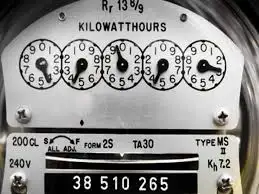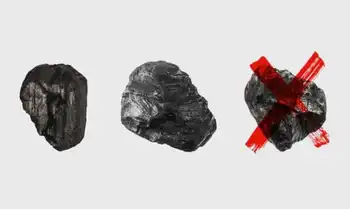Hospital shows how to be lean and green
By Knoxville News Sentinel
Protective Relay Training - Basic
Our customized live online or in‑person group training can be delivered to your staff at your location.

- Live Online
- 12 hours Instructor-led
- Group Training Available
On this particular day, however, a Chevy 4x4 sporting a "Friend of Coal" bumper sticker sits brazenly in a reserved spot.
The Johnson City hospital can't prosecute offenders, but the signs signal that the new hospital represents a different approach to health care, says James Watson, spokesman for the Mountain States Health Alliance, the Johnson City-based system that owns 13 hospitals in northeast Tennessee, Virginia, Kentucky and North Carolina.
"If nothing else, it's a visual reminder to our community" that consideration of the environment is important, he says. The three-building complex, which includes a physician office building, also features parking with electrical outlets for golf carts and a bike rack.
The medical center, expected by officials to be the first hospital in Tennessee to gain LEED certification from the U.S. Green Building Council, is part of Mountain States' plan to incorporate sustainability into all of its facilities, Watson says.
"Our CEO said he wants us to be the green health care system in East Tennessee," he says.
On a tour of the new, 240,000-square-foot facility, hospital CEO David Nicely ticks off the green features: offset entrance doors to keep pure air inside and reduce draft cork flooring in non-clinical areas Energy Star-rated appliances abundant glass that allows in natural light and a site plan that conforms with the natural topography of the land - including wrapping part of the hospital around an oak tree.
Outdoor nooks and crannies feature rock gardens that also help channel clean stormwater runoff back into the earth. No new-construction smell permeates hallways or rooms thanks to the use of low-VOC paint. The art is local, and frames are made of recycled material. The cafeteria, Nicely says, offers healthy and organic foods.
The green features are in keeping with using technology and design to create an environment for efficient and effective patient care, Nicely says, adding the company incorporated the needs of providers, patients and the environment. For example, the hospital has replaced a traditional phone network with a wireless system that goes with employees wherever they are in the facility. Rooms have been made larger to accommodate visiting family members. And walls have been removed from nursing stations, with smaller, more numerous units scattered throughout the wards, to encourage communication between visitors and employees, he says.
The $122 million investment will pay off, Mountain States believes.
"We're more efficient, there are less steps taken, I need less team members," he says, referring to the patient-friendly layout of the facility.
The hospital's air conditioning and power systems should save the facility $6 million to $8 million over the next 20 years. The measures should pay for themselves in seven years, he says.
"For every $1 we spend of energy we have to make $20 to pay for it," says Bill Alton, Mountain States Healthcare Alliance assistant vice president for construction. "So if we can reduce energy costs we can reduce health care costs."
The flesh and blood of its green initiatives, as Alton describes them, are found in the power and boiler rooms, where a maze of machines and pipes heat and cool air and water for the 240,000-square-foot facility. Diesel generators stand by in case of power failure.
"The electrical system is kind of the brains," he says. "The water is the blood and lifeline of a lot of the systems we use. There's significant energy savings when you go from old to new technology."
Some of that technology includes variable frequency drives for the systems' numerous motors, which respond to the demand of the building and adjust the power accordingly - representing 30-40 percent of the building's overall efficiency improvement. Air and water are recycled to prevent loss of heat or cooling, depending on the season and demand.
It's all managed by a sophisticated computer system that's tied into patient rooms and employee areas, allowing them to, within certain ranges, adjust the thermostat to their comfort level.
Although the hospital's certification process is not yet complete, officials expect to receive LEED silver ranking. The facility lacked one point to qualify for gold certification, but decided not to invest in renewable power generation- such as solar panels - because the cost would have outweighed the benefits, Alton says.
"We chose not to do that because it didn't make sense," he says. "Just to say we had a gold building was not worth passing that cost to our customers."
But obtaining LEED certification was important to serve as a community example of what's possible, Nicely says.
"As much as anything it's a symbol," Nicely says. "A lot of people are reluctant to do anything green because they think it breaks the bank. It doesn't. Hopefully that's going to inspire others."











